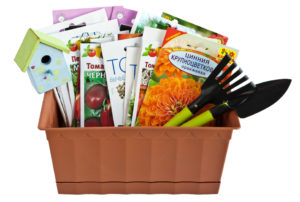Q. The leaves on our forty-year old Fruitless Mulberry have been dropping. We don’t water it much as the shallow roots are growing in the lawn area. Do you think the canopy has outgrown its root system?
A. No, I do not think your Mulberry has out grown its root system as they’re not a short-lived tree. This is a drought related problem. In previous years, frequent lawn watering was sufficient to support a mature tree. However, dry winters, water restrictions and several triple-digit heat spells are showing its effect on mature landscape trees throughout the area. While you may have stopped watering your lawn, you should not abandon watering mature trees. They more than pay their way with the energy savings and the cooling effect from the shade along with the increase in property value. Trees with exposed roots and or shallow-rooted varieties such as Redwoods are susceptible to water stress. It’s not too late to take some positive steps this fall and to continue them next year and beyond. Mature trees should be watered every three to four weeks, June through October, depending on the temperatures. This is particularly important for those areas replanted or not planted at all. I’d mulch the exposed root area with a three inch layer of organic matter to replace the insulation effect from the previous lawn. You could use bark, compost or the natural debris from other plants along with shredded household paper. Also, be sure not to bury the crown or base of the tree with the mulch. Next, under the canopy, set up a drip system or better yet use my personal favorite—a soaker hose, the grandfather of the drip irrigation systems. Soaker hoses offer a slow and steady release of water to your tree(s). The slow release allows the soil around tree roots to gradually absorb the water. And the proximity of the hose to soil means that very little if any is lost to evaporation. It’s tough to know how long you should run your soaker hose to get enough, but not too much, water into the ground. It’s recommended you apply six to eight inches of water per month in one or several waterings. The easiest way to calculate this is with a shallow container such as a tuna can. It’s placed under a section of hose and you see how long it takes to fill it up with one inch of water. You then multiply that by six or eight to determine how long to run you hose. Once that’s determined, you automate the process with a Dramm Water Timer attached to your hose bib. With turf being replaced with water wise planting, mature trees are going to suffer unless measures are taken to replace the moisture the previous lawn provided.
Note: Here are two short videos produced by the Forest Service and California ReLeaf on how to water mature and young trees. They worth the viewing. https://youtu.be/lrirPBMTYi0 and https://youtu.be/P_kQZriJ38U.
Q. I purchased my tomatoes seeds online from the Burpee Seed Company. I germinated the seeds and transplanted twelve seedlings into my vegetable garden last spring. The plants have all prospered, however, five plants produced dinky, little, cherry like tomatoes instead of the desired large, slicing type tomato. What happen and what should I do next year to prevent it from recurring?
A. I do not believe anything culturally went wrong with your tomato plants. This is a simple case of human error. Flower and vegetable seeds are packaged by machine. When they change from each variety, the machine should be cleaned out of any remaining seed before resuming packaging. This apparently did not occur with your seed package so you ended up planting two different varieties. I’d write Burpee and explain the problem and ask for refund.
Q. We removed an old apricot and plum tree from our backyard. We’re planning to pour a cement slab over one spot and place a shed over the other. The stumps are below the soil surface and I’ve been digging out the other roots, but it’s a lot of work. If I leave the roots, will I have a problem with shoots growing through the cement and or shed floor?
A. It’s not necessary to remove all the roots. You should level the area and remove those roots in the area of the new pads. It is going to be difficult for roots to penetrate a cement slab as long as it’s poured correctly. I’d be concerned with cracks, especially from earthquakes, so you might pour a thicker slab than normal. Apricots and plums are budded on the same root stock that is notorious for suckering, so I’d expect that suckers will appear in the open area beyond the pads. Right now, there isn’t much you can do. You’ll have to wait for new shoots to develop and then spot treat them with a herbicide or remove them manually. Which herbicide you use will depend on where the shoots are and the location of desirable trees and shrubs. I wouldn’t be inclined to spray any herbicide on bare ground as it’s not a very effective control. You’ll need to be persistent as it will be a battle of attrition which you will win.
Leave a Reply